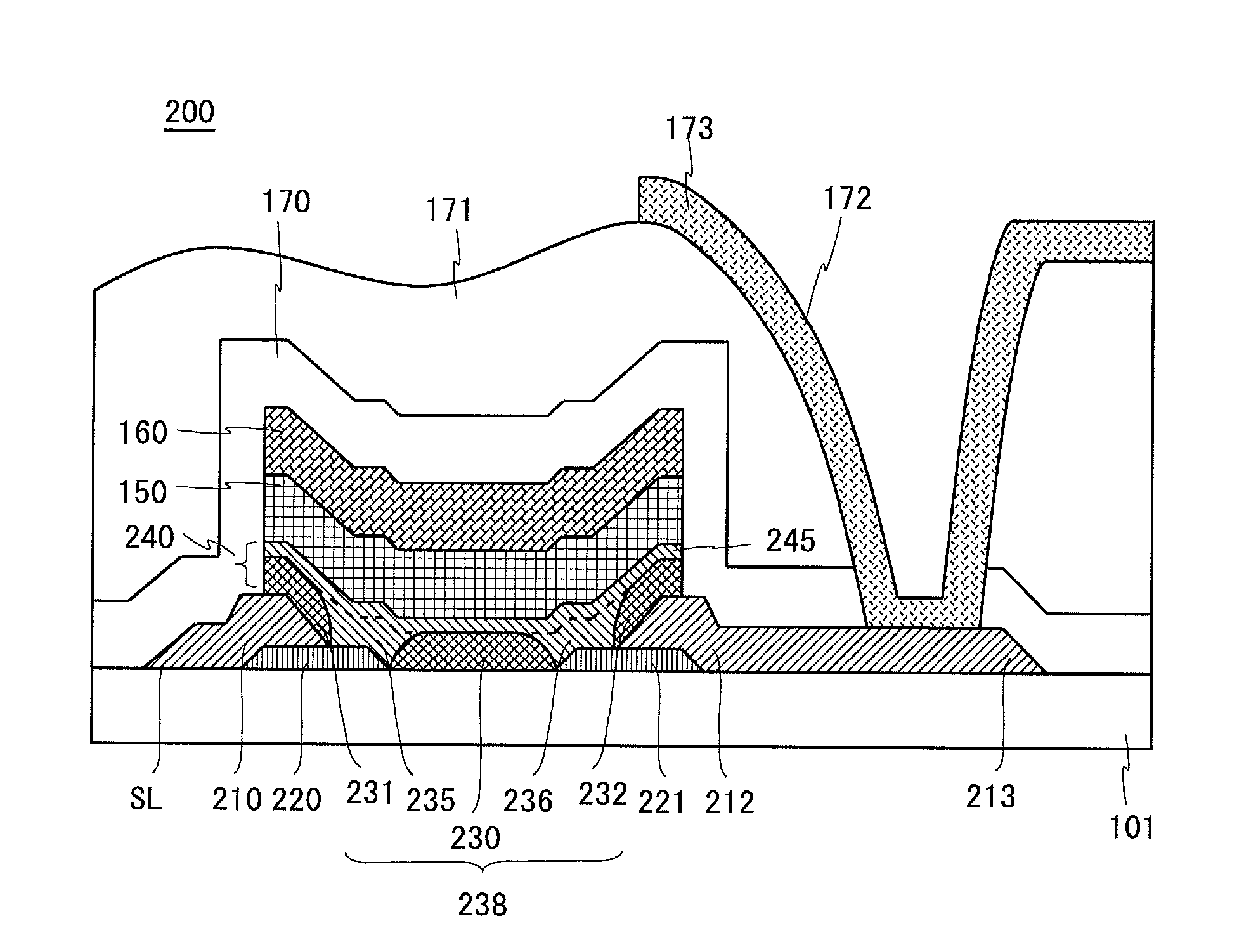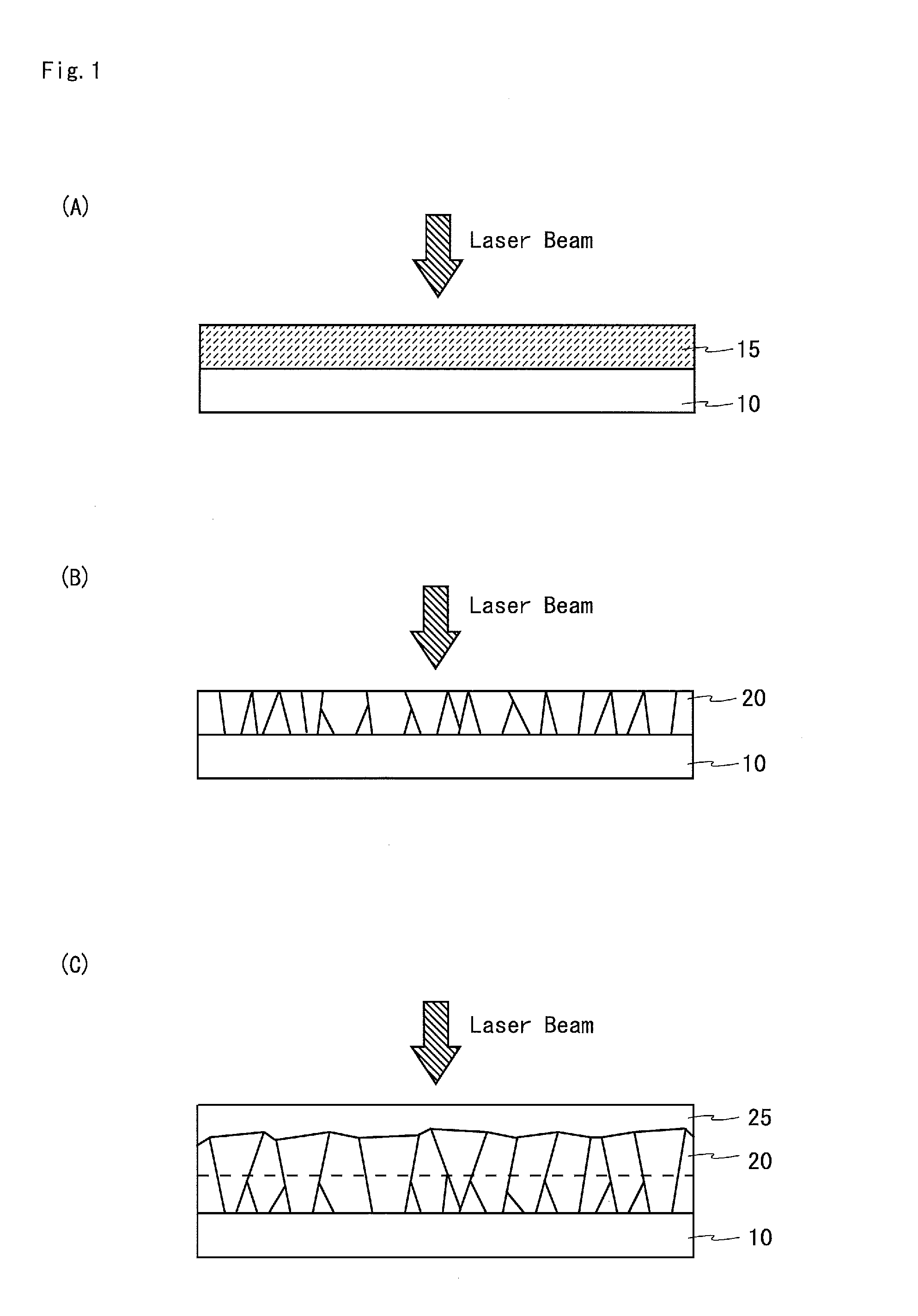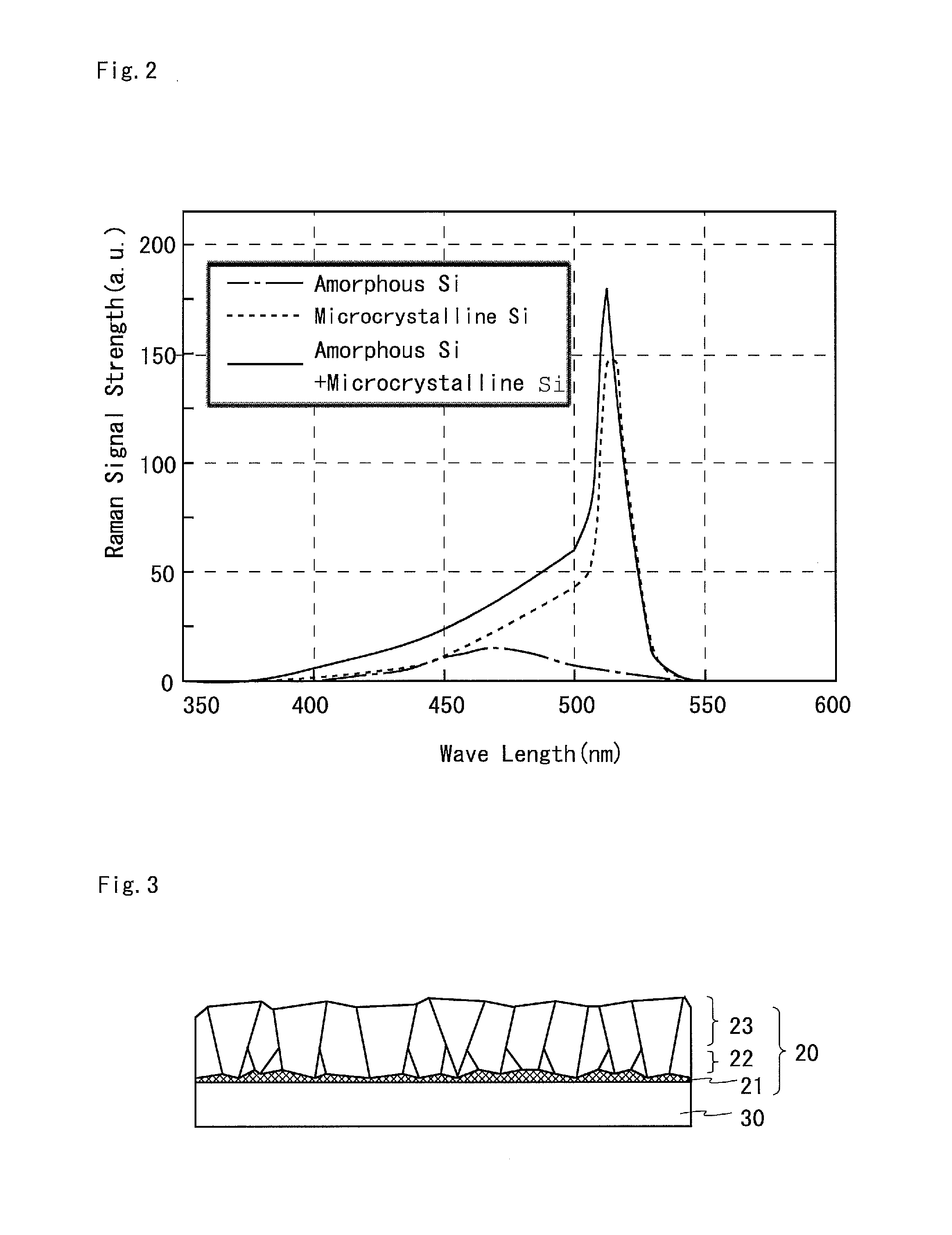Thin film transistor and method for manufacturing the same
a technology of thin film transistors and manufacturing methods, applied in the direction of transistors, semiconductor devices, electrical equipment, etc., to achieve the effects of increasing crystal grain size, reducing off current, and reducing on-state curren
- Summary
- Abstract
- Description
- Claims
- Application Information
AI Technical Summary
Benefits of technology
Problems solved by technology
Method used
Image
Examples
first embodiment
2. First Embodiment
[0083]A liquid crystal display device includes a liquid crystal panel, which is formed with a plurality of image signal lines SL; a plurality of scanning signal lines GL crossing vertically thereto; and a plurality of pixel formation portions each at one of intersections made by these lines. FIG. 4 is an enlarged plan view showing part of such a liquid crystal panel. At each pixel formation portion, there is formed an n-channel TFT 100 which has its gate electrode 160 connected to one of the scanning signal lines GL that passes through a corresponding one of the intersections, and has its source electrode 110 connected to one of the image signal lines SL that passes through the corresponding intersection. There is also formed a pixel electrode 173 which is connected to a drain electrode 112 of the TFT 100 via a contact hole 172.
[0084]FIG. 5(A) is a sectional view showing a configuration of the TFT 100 according to the first embodiment of the present invention wher...
second embodiment
3. Second Embodiment
[0112]FIG. 11 is a sectional view showing a configuration of a TFT 200 according to a second embodiment of the present invention. Among the constituent elements of the TFT 200, the same elements as those found in the TFT 100 according to the first embodiment shown in FIG. 5(A) will be indicated with the same reference symbols. The description hereinafter will focus primarily on different constituent elements.
[0113]As shown in FIG. 11, on an insulated substrate provided by a glass substrate 101, n-type silicon layers (also will be called impurity-doped semiconductor layers) 220, 221 made of microcrystalline silicon and having tapered side surfaces are disposed at a predetermined distance from each other. The n-type silicon layer 220 has an exposed end on the side opposing to the n-type silicon layer 221, and an end covered by a source electrode 210. Also, the n-type silicon layer 221 has an exposed end on the side opposing to the n-type silicon layer 220, and an e...
third embodiment
4. Third Embodiment
[0126]FIG. 14 is a sectional view showing a configuration of a TFT 300 according to a third embodiment of the present invention. Among the constituent elements of the TFT 300, the same elements as those found in the TFT 200 according to the second embodiment shown in FIG. 11 will be indicated with the same reference symbols, and the description hereinafter will focus primarily on different constituent elements.
[0127]As shown in FIG. 14, two n-type silicon layers (also will be called impurity-doped semiconductor layers) 320, 321 of microcrystalline silicon which have tapered side surfaces are opposed to each other on a glass substrate 101. The n-type silicon layer 320 has an exposed end on a side opposed to the n-type silicon layer 321 whereas another end is flush with an end of the image signal lines SL, being different from the TFT 200. The n-type silicon layer 321 has an exposed end on the side opposed to the n-type silicon layer 320 whereas another end is flush...
PUM
| Property | Measurement | Unit |
|---|---|---|
| thickness | aaaaa | aaaaa |
| thickness | aaaaa | aaaaa |
| thickness | aaaaa | aaaaa |
Abstract
Description
Claims
Application Information
 Login to View More
Login to View More - R&D
- Intellectual Property
- Life Sciences
- Materials
- Tech Scout
- Unparalleled Data Quality
- Higher Quality Content
- 60% Fewer Hallucinations
Browse by: Latest US Patents, China's latest patents, Technical Efficacy Thesaurus, Application Domain, Technology Topic, Popular Technical Reports.
© 2025 PatSnap. All rights reserved.Legal|Privacy policy|Modern Slavery Act Transparency Statement|Sitemap|About US| Contact US: help@patsnap.com



